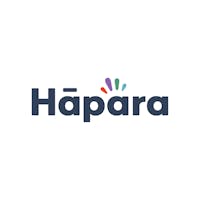Big data has arrived. In the healthcare and finance industries, it is leading to more confident decision making and helping to spot trends, prevent diseases, and combat crime. After a drought in the world of meaningful student performance data, big data is now starting to make waves in the education world as well.
There seems to be general agreement that the state-reported standardized test scores of the last decade provided less value to schools than anticipated. The tests were economical--perhaps too economical. In addition, the resulting education reporting and research focussed largely on these exams. Prior to 2000, such research consisted of mostly small sample-size studies. From these, researchers attempted to draw conclusions that teachers might apply in their classrooms. But it’s tough to confidently develop best practices based on such small sample sizes.
In contrast, the latest national-level, standardized exams more closely mirror the internationally respected PISA, which measures performance on mathematics, science, and reading worldwide. It remains to be seen whether the new tests will provide the information we are looking for or not. What will likely prove exceptionally valuable, however, is the unstructured data students and teachers produce in the rapidly growing education cloud.
When a school makes the move to a cloud-based system, a valuable new opportunity for analytics appears. Imagine that a child stores all of her writing in a cloud-based platform from the moment she is able to competently type. Think about the number of paragraphs written and words typed by her junior year of high school. Consider also the frequency and number of her communications and comments, her application choices for certain tasks, and the time stamping on everything that happens in the cloud. Taken together, there is a magnificent opportunity for a statistically significant analysis of that student’s efforts, which in turn can can both directly benefit her learning and that of others.
The challenge for education technology providers, of course, is that with great power comes great responsibility. Even if the proposed bipartisan legislation known as the Student Digital Privacy and Parental Rights Act (SDPPRA) passes in Congress sometime soon, the local education agencies and the technology companies they hire will still need to define what should and should not be done with education data available in the cloud and elsewhere. Just because we can use it, does not mean we should.
Private Concerns In An Open World
At Hapara, we help educators effectively use cloud-based, open tools to improve student learning. To help us better understand how the education data culture is evolving, we convened a small data privacy forum of teachers and students in April of this year. At the forum, we discussed the types of data now available as well as which data should be accessible and analyzed and by whom. The conversation was rich. For every seemingly obvious no-go area of data analysis, the group eventually agreed that there were cases in which using data at the individual level would be acceptable.
For example, Mike Kuliga, an administrator from the Sequoia Union High School District and Thomas Richards, a graduating senior from Sequoia High School’s International Baccalaureate program debated at length over whether it was beneficial for teachers to have data about a student before a class begins. This is already common practice in most schools.
Thomas argued that he wished to be judged on the merits of his performance rather than the history of his performances.
Thomas also outlined his libertarian philosophy that may very well be a core value for many adolescents. He said, “Parents understandably have access to all the data that exists about you until you are eighteen.” But he opined, “As the size and concomitant power of the institution with which you are interacting grows, so should the limits on the data to which that institution has access.” Thomas made the point that his parents, for example, do not have a standing army (and probably love him unconditionally). They know him, and have a complete picture of him from which to make judgments. The state and federal government do not have such rich data. His school is--well--somewhere in between.
Mike, for his part, argued that school officials, with the body of case law that defines in loco parentis supporting them, need to have access to data about student capabilities and actions to both appropriately differentiate and maintain a safe environment that promotes equitable opportunities.
Quality vs Quantity
The teachers participating in the forum were a self-selecting lot, all of whom make heavy use of digital tools. They challenged themselves to consider which data about their own practice and actions they would be comfortable sharing with their colleagues and evaluators. For example, they considered whether there is value in disclosing the number of comments a teacher makes on student efforts. And what about measuring the number of times a teacher opens students’ documents, visits their websites, or reads their blogs? It was not clear to the educators if airing this data in a school community would always be fruitful.
They all agreed, however, that comments have varied purposes and value; they were uncomfortable being judged for the quantity of their interactions alone. “If I write one thoughtful paragraph about a student’s lab report, I know that is better than saying ‘nice work’ ten times on the same document,” said Carlmont High School science teacher Gigi Silva.
Ben Canning, an IB and Partnership Academies teacher from Sequoia High School, suggested that trust was a deciding factor. “I would share data with colleagues and administrators I trust to improve my practice, but I’m not so sure I would want it to be common practice that everyone is judged on the number of times they say, ‘Good job!’” Think of the race to the bottom that could result from that.
Conclusions from the Cloud
We pulled several insights from the discussions. Chief among them were the following:
- Qualitative data is as valuable in education as quantitative data. Numbers can help tell the story that narratives describe, but without the narratives themselves, the stories can be incomplete.
- Different institutions have different tolerances for data sharing. Elementary schools usually have no apprehension about closely monitoring student email for appropriate content, for example. Secondary schools, on the other hand, wrestle with how much privacy to cede to adolescents in conversations that ultimately can be retrieved, if necessary.
- There is a fourth dimension to any full picture of data -- relationships. Learners and educators are much more willing to share their data if they know and trust those who will be examining the information.
SDPPRA promises greater legal clarity for both local education agencies and edtech providers. For Hapara and other companies that have signed theStudent Data Privacy Pledge, this is welcome news. Now we face a much greater challenge: To shape respectful and age-appropriate data sharing cultures within education institutions themselves.



